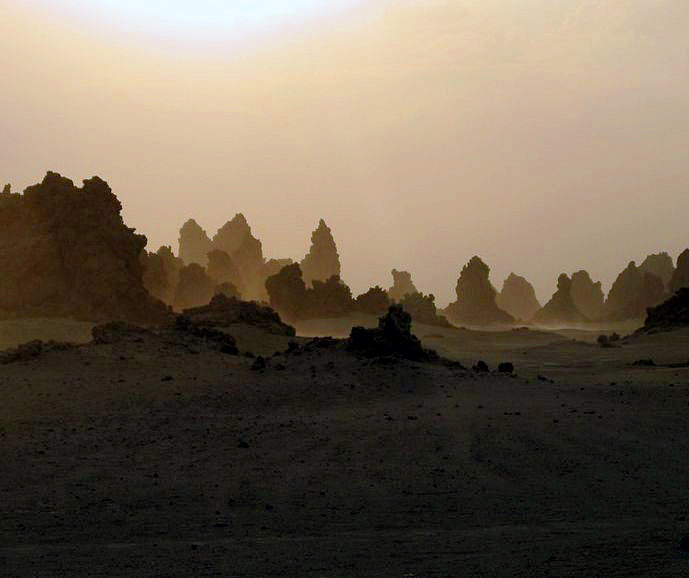Chimneys in a Time of Drought
Jul 13, 2013
 Years of drought have drastically lowered the water level of Lake Abbe, along the border between Djibouti and Ethiopia in the Horn of Africa. Vast stretches of what used to be lake bottom are now exposed, including clusters of limestone formations like these, many of which are chimneys venting sulfuric steam.
Years of drought have drastically lowered the water level of Lake Abbe, along the border between Djibouti and Ethiopia in the Horn of Africa. Vast stretches of what used to be lake bottom are now exposed, including clusters of limestone formations like these, many of which are chimneys venting sulfuric steam.
The chimneys formed when the vents were underwater; heat from the steam caused minerals to precipitate out of the lake water and build up around the rims of the vents.
Lake Abbe is a salt lake, the lowest point of a desert drainage system that has nowhere to drain. It's full of steam and sulfur because it's probably the birthplace of a new ocean, a triple junction of spreading faults where three tectonic plates are being pulled relentlessly apart from one another. Two of the faults are already so deep that they are full of ocean water: the Red Sea and the Gulf of Aden. The third fault stretches south from Lake Abbe through eastern Africa as a chain of lakes and deep depressions: the East African Rift.
Along these faults, tectonic plates are pulling apart from one another at rates approaching an inch a year, thinning out the earth's crust in the region, and generating much volcanic activity and gaseous emissions. The geologic evidence strongly supports the likelihood that someday the land around Lake Abbe will be thousands of feet underwater, near the middle of a big blue sea.
But it will take a while. Rifting began here about 60 million years ago. At current rates of divergence, the new basin is spreading roughly 10 miles every million years. In another 100 million years, we'll have an ocean about a thousand miles across.
The drought may (or may not) be over by then.